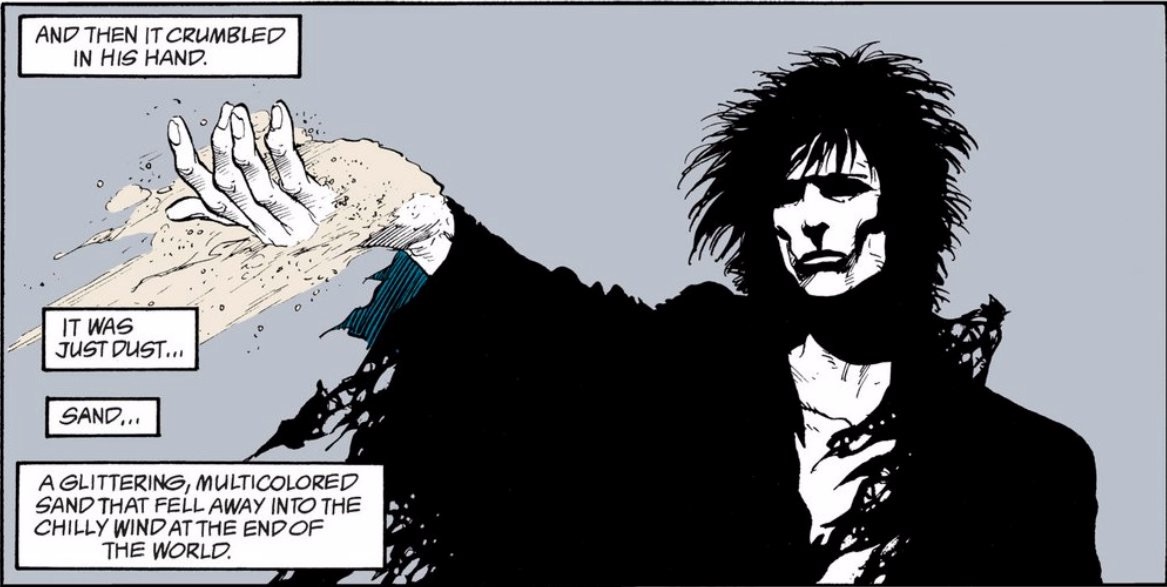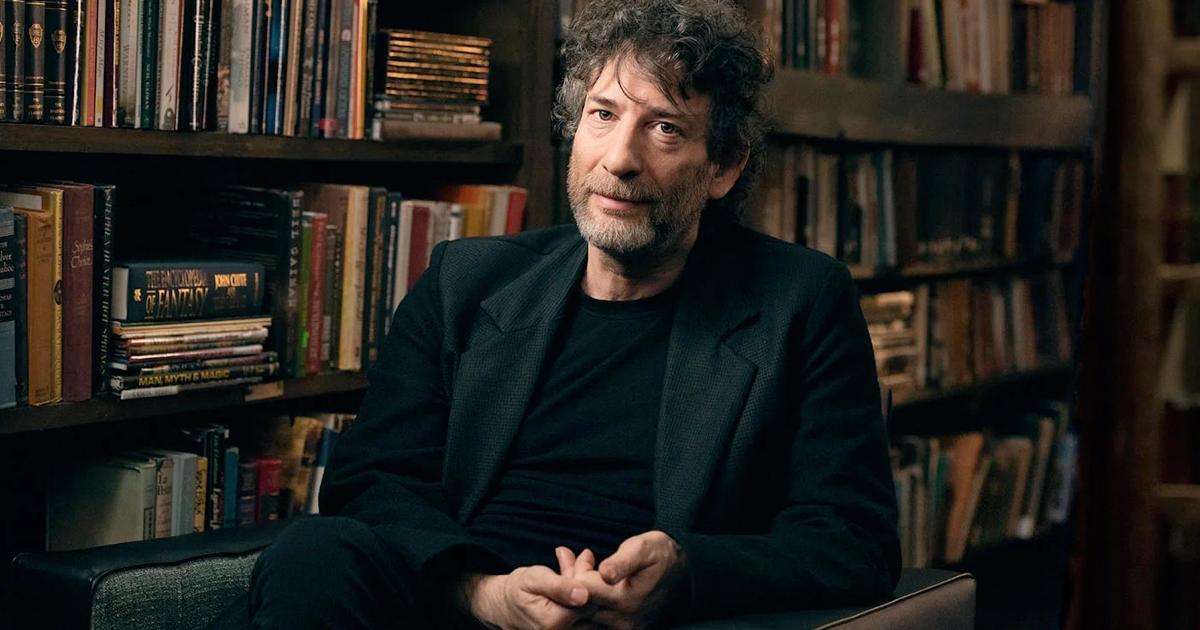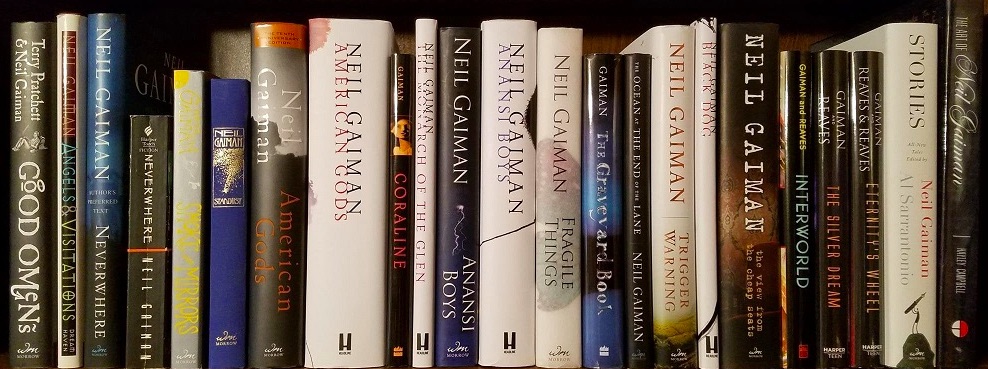After seeing MasterClass ads online for years now, I finally decided to try them out.
(Fun fact for all you marketers out there: MasterClass ads are one of the only ad types that I watch all the way through on YouTube, even when they’re 2 minutes long.)
Neil Gaiman’s MasterClass “The Art of Storytelling” is not the first MasterClass I started, but it is the first one I finished. I’ll explain why in just a moment.
But if you’re like me, the real question you’re wondering is… “was it worth it?”
To answer that, here’s what I enjoyed about the class, a few missing elements that I wish his MasterClass had covered, and some of Neil Gaiman’s writing advice that stuck with me.
What Does This MasterClass Include?
Neil Gaiman’s MasterClass: The Art of Storytelling includes:
- 19 video lessons, totalling approximately three and a half hours of instruction
- a 94-page downloadable workbook with writing exercises, references, and suggested reading (optional)
- the opportunity to discuss the class inside the MasterClass community forum (optional)
If you’re in a hurry, you can watch the videos at 1.5x and 2x speeds — but in this particular case, you probably won’t want to rush through them.
Neil Gaiman: Storyteller

I loved reading Neil Gaiman’s genre-defining Sandman series from DC / Vertigo Comics during the 1990s.
Now, 25 years removed from the enthralling adventures of Dream, Death, and the rest of the Endless, I was excited to hear Neil’s writing advice. After his long and successful career in comics, novels, and short stories, I presumed he must have some insights worth sharing.
Really, I wanted to learn two things: how his writing process works, and examples of how he solves his writing problems when he’s in the middle of constructing a story.
On those two fronts, Neil Gaiman’s MasterClass mostly delivers.
He doesn’t go into painstaking detail about his writing process, but he does discuss it with a mix of theory and practicality. As you might expect from a writer whose signature style is equal parts whimsy and macabre, he takes an almost magical view of the writing experience, yet he’s always acutely aware of how the nuts and bolts of the process need to fit together in order to make a story work.
Gaiman also has college teaching experience, which helps the lessons and anecdotes in his MasterClass stay focused on relevant, actionable advice.
But maybe the best asset of the entire course is Gaiman’s delivery.
His his speaking voice has a pleasing lilt and compelling cadence that serves him well as he tries to describe the inscrutable yet essential aspects of the writing process, or reads aloud from his works in order to provide more concrete examples within his lessons. Plus, his natural sense of how to gradually build an anecdote to an emotionally resonant conclusion is a truly vital skill that storytellers of all types would benefit from studying.
3 Memorable Lessons from Neil Gaiman’s Writing Advice

When it comes to writing, I’m very much drawn to issues of character and structure.
I always love learning how other writers figure out how to structure their stories, or what they do when they realize something just isn’t working on the page. When Gaiman does adress these issues in his MasterClass, he often includes examples that he either makes upon the spot or cites from his own works. Personally, I find that very useful — it’s the literary equivalent of “showing your work” in algebra class.
Of the many useful tips in Neil Gaiman’s MasterClass, here are 3 that stood out to me:
On the value of rewriting. When you finally finish writing something, Gaiman advises taking some time away from it, then returning to it several weeks later and viewing it as if you are a reader encountering these words for the first time. Pay attention to what works and what doesn’t, but most importantly, pay attention to your own expectations as a reader. Did the writer meet them, or are they misaligned? For example, were you expecting a pivotal moment to happen in a future chapter, but the writer explained it away “off-camera” as a shortcut? If it feels like the story isn’t delivering earned payoffs and setups, that’s a structure issue that you need to address in your next draft.
On using an audience’s expectations against them. Audiences love familiar genres, familiar characters, and familiar tropes, but often the real thrill in a story comes from memorably subverting their expectations. In a reading of his short story “October,” about a woman who finds a genie in a lamp, Gaiman notes how the woman’s choices defy the genie’s expectations, which in turn leads to the story taking a very different turn than either the genie or the reader are first expecting. (He also points out how he uses dialogue to deliver exposition and reveal character at the same time — a must-have skill for any short story writer.)
On finding the heart of a story. While his lesson on writing for comics only takes up 30 minutes in this nearly four-hour MasterClass, it contains plenty of valid advice for writers in all genres and mediums. In particular, he recalls a pivotal moment from the creation of one of his most beloved stories. When he devised the script and the layout for Sandman #19, “A Midsummer Night’s Dream” — which is a story about the very first staging of the play of the same name by William Shakespeare — Gaiman sent the script to his editor, Karen Berger, for review. He was quite proud of it, but she told him that while it was an interesting concept, something crucial was missing from the story: a reason for the audience to care.
His layout only had one free page on which he could add anything more to the story… and the solution he came up with not only passed muster with Berger, but it also led the issue to become the only comic book to win a World Fantasy Award.
The big lesson? Even the most interesting stories won’t work if your audience doesn’t also feel something along the way.
What’s Missing from Neil Gaiman’s MasterClass?

Lets be honest: no four-hour seminar could possibly convey everything that a writer with Neil Gaiman’s decades of experience has to offer.
But if I could add anything to his MasterClass, I would have loved to dive deeper into his exploration of character and conflict.
To be fair, he does spotlight this topic quite well during his discussion of The Graveyard Book, his novel about an orphaned baby raised by ghosts in a cemetery. As he notes, stories happen when people clearly want opposite things, or when multiple people want the same thing.
But because so many of his stories (Sandman, The Graveyard Book, Neverwhere, Good Omens, American Gods) are ensemble pieces, I would like to know more about how he develops characters in opposition across a spectrum of personality types, and how he decides when he needs a new character vs. being able to assign actions to existing characters instead.
Perhaps if Neil and I ever have a conversation, I’ll ask him.
(Also, it’s worth mentioning: if you’re interested in the business of writing, this is not the class for you. While Gaiman does offer some advice on dealing with deadlines, writing with collaborators, and working with editors, his MasterClass is meant to help new and aspiring writers find their voice and finish their stories. It is not a guide to finding an agent, getting published, or negotiating contracts.)
Bottom Line: Is It Worth It?
I can’t spend your time or money for you, but I will say this:
For me, as a writer with plenty of ideas whose biggest problem is actually writing them through to completion, Neil Gaiman’s MasterClass was worth my time for two reasons.
First, his practical examples are actually helpful. I took many notes during his lessons, and they gave me a much richer appreciation for just how effortless the finished product of his stories often seem.
But maybe more importantly, the way Neil Gaiman talks about writing makes me want to be a writer.
His enthusiasm for the art of writing is contagious, and he makes becoming a writer feel possible.
In the end, that might be his most compelling lesson of all.
If You Liked This Post, You May Also Like:
Why Black Sails Has One of the Best Main Characters in TV History


0 Comments